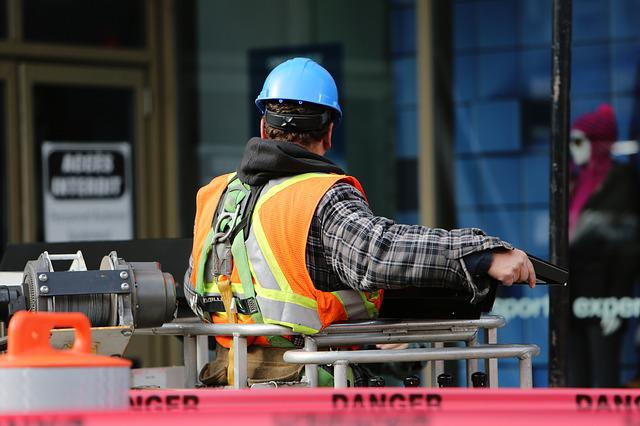
Construction sites do not always mean a safe harbor!
Operators are often handling heavy machines, and equipment, dangerous tools, standing up on high elevations, walking around screws and nails, and a number of frightening scenarios.
In fact, addressing these life-threatening dangers is no longer new as so many workers are injured and died on construction sites every year.
Construction workers are exposed to hazards like falls, slips, and trips, getting struck by machines, electrocutions, and many more dangers. These accidents can not only lead to pain and suffering, but also increase absenteeism, reduced productivity, and a plethora of problems for injured operators and employers.
While inadequate workplace safety practices contribute to these accidents, incorporating safe practices and providing training can help minimize injuries and accident rates.
Here we have outlined the three most common types of accidents and ways to prevent them:
Equipment-Related Hazards
Where there are heavy pieces of equipment like cranes, lifts, and big trucks, the odds of meeting accidents become high. Due to working in different weather conditions, and high-traffic, operators driving heavy pieces of equipment are exposed to tip-overs, electrocutions, and crushing/tripping hazards. This one is the leading cause of fatalities in manufacturing and industrial environments.
How to Prevent:
Assessing your workplace and identifying when and where these accidents occur will help you to create a safe approach. While this particular task can be tricky for unskilled operators, aerial lift certification will not only boost your skills, but also help with steps to recognize and minimize accidents.
This will also help you learn how to drive lifts properly and maintain overall workplace safety. Moreover, trained skill set and expertise can only help you establish safe work systems.
Falls and Slips
The most common type of injuries associated with this are broken bones, head injuries, sprains, muscle injuries and cuts.
Occasional spills on the floors, wet surfaces, loose mats, poor lighting, uncovered cables, clutter, inadequate scaffolding, and uneven walking paths are the common reasons.
How to Prevent:
The key ways to prevent falls, slips, and trips are clutter-free walking surfaces, good housekeeping, and proper footwear. Besides, employees should watch the path they are navigating either when walking or operating lifts. They should also be instructed to report areas where obstruction, clutter, damage, or spillage has occurred.
Moving Machinery-Related Accidents (Caught-in/Struck By)
Machinery that is not fully guarded invites a number of safety hazards. Heavy objects, when falling from unguarded machinery, can become disastrous.
On the other hand, carelessness to exposed moving parts often leads to body parts caught in between the machinery. For instance, moving parts of the machine like rotating, reciprocating, auxiliary components, and feed mechanisms can cause struck by hazard if practiced unsafe.
The injuries caused due to this include severed fingers, crushed arms, blindness, and even worse.
How to Prevent:
In order to avoid mechanical hazards, the first and the foremost thing is to make sure that every machine part, functions, and process that might cause injury is safeguarded. Also, make sure your employees are equipped with protective wearable and should have adequate training to execute their work safely!
Conclusion
Accidents can occur anytime, anywhere; taking a holistic approach will help you to prevent hazards and keep up with a safe environment. Make sure to provide your employees with adequate safety procedures and protocols to follow.
Informing workers on the proper ways to limit the risks associated with construction hazards and to respond in emergencies would significantly minimize the chances of risks!
